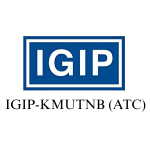Explore the Exciting World of Mines Game – Strategies_ Tips_ and Tricks_7
-
Explore the Exciting World of Mines Game – Strategies, Tips, and Tricks
-
Mastering Basic Gameplay Mechanics
-
Understanding Mine Placement and Risk Assessment
-
Decoding the Grid: Reading Numbers for Better Moves
-
Advanced Strategies for Winning More Matches
-
Utilizing Patterns to Predict Safe Spots
Explore the Exciting World of Mines Game – Strategies, Tips, and Tricks
In the captivating realm of numerical challenges, players navigate a grid filled with concealed treasures and perilous zones. Mastery requires not only keen observation stake mines but also a firm grasp of logical deduction. A clear understanding of how numerical hints correlate with hidden locations is fundamental for survival and success.
Successful participants recognize that each move can dramatically alter the landscape of possibilities. A vital approach is to prioritize opening cells with lower numerical values, as these often yield critical insights into surrounding areas. Additionally, learning to recognize recurring patterns among numbers can significantly boost one’s efficacy in this engaging puzzle.
Effective planning and foresight play indispensable roles in decision-making. Keeping track of previously uncovered squares aids in minimizing risk while maximizing information retrieval. By honing these techniques, players enhance their skills and achieve higher scores, transforming a simple pastime into a competitive pursuit of genius.
Mastering Basic Gameplay Mechanics
Understanding core principles enhances your experience significantly. Familiarize yourself with grid layout, as it serves as your battlefield. Each square can either contain a mine or provide valuable information. Pay attention to numbers displayed in revealed squares; they indicate how many mines are in adjacent cells.
Employ fundamental reasoning skills when assessing chances of danger. A square showing “1” suggests only one mine in its neighboring squares. Utilize this clue to deduce safe spots. As you unveil more squares, patterns emerge. Recognize that the frequency of low numbers often correlates with the presence of mines. Caution is key.
Prioritize safe moves initially, revealing squares on the edges or corners, which often yield useful intelligence without immediate risk. Avoid clicking randomly; instead, use calculated risks based on deductions. If you’re faced with a set of squares that confounds you, employ the process of elimination. Consider what spaces must contain mines based on revealed numbers, guiding your next moves.
Don’t hesitate to use flags to mark suspected mine locations. This not only clarifies your thought process but also prevents misclicks. A systematic approach will streamline gameplay. As you progress and gain confidence, you can tackle more challenging situations with a structured mindset.
Lastly, practice is indispensable. Engaging with various levels will acclimate you to diverse scenarios. Each session hones your ability to predict potential mine placements and makes you a more adept player. Keep analyzing outcomes to refine your tactics further.
Understanding Mine Placement and Risk Assessment
Effective mine placement is crucial for gaining an advantage in this challenging environment. Players must evaluate potential positions meticulously. Begin by categorizing zones based on known enemy behavior and probable interactions. Central areas often attract more attention, thus, deploying mines in less predictable locations can yield better results.
Risk assessment plays a vital role in minimizing losses and maximizing effectiveness. Analyze each placement decision based on several factors, including visibility, accessibility, and potential for enemy engagement. Mines placed in secluded corners might take longer for opponents to trigger, while those near high-traffic paths can quickly influence enemy movements.
Another key consideration is the combination of defensive and offensive placements. Layering defensive mines near objectives can protect critical areas from capture, while offensive placements may disrupt enemy strategies during advancement. Timing also influences effectiveness; placing mines before anticipated enemy movements can capitalize on their unpredictability.
Utilizing a variety of mine types increases the likelihood of deterring opponents. Different mines can trigger under distinct conditions, making them harder to anticipate. Consider deploying anti-personnel and anti-vehicle mines in tandem to create a multi-faceted threat. Additionally, maintain situational awareness to adjust placements when new information surfaces about opposing player tactics.
Lastly, continuously learning from each encounter allows for refining placement techniques. Collect data on enemy responses and mine activations. Analyzing these patterns helps in making informed decisions for future engagements, enhancing overall gameplay proficiency.
Decoding the Grid: Reading Numbers for Better Moves
Understanding numbers on the grid holds key significance for improving performance in this puzzle. Each numeral indicates the total count of adjacent hidden cells that harbor explosives. This crucial information assists in making informed choices.
Grasping Number Significance: Each digit from one to eight reveals the amount of bombs in neighboring squares. For instance, if you encounter a “3,” it denotes three deadly cells surrounding it. Your next task is to deduce their locations based on surrounding unmarked squares.
Safe Zone Creation: Focus on corners and edges. If you identify a “1” next to one unmarked square, it’s highly probable that the bomb resides there. Mark that tile as dangerous to aid in delineating areas of security.
Cluster Analysis: When numbers cluster, exercise caution. If two “2s” are adjacent, surrounded by three unmarked tiles, it’s logical to infer that multiple bombs lie within those. Carefully probe these formations to uncover safety zones.
Cross-referencing: Use identified safe numbers to cross-reference with others. A square marked with “4” adjacent to one “2” provides a reference point. You deduce that the “2” can only contain two bombs from the available three potential squares.
Probabilistic Reasoning: When faced with multiple choices, calculate probabilities. If a “1” is bordered by two unknowns but one shares a corner with a higher number, prioritize exploring the higher count. This logic reduces risk when revealing unmarked spaces.
Collaboration of Tiles: Utilize a combination of digits to deduce positions. A group of numbers can provide clarity when isolated. Analyze interactions among numbers; if a “1” is adjacent to two others, one may carry a bomb; the relation aids in uncovering possibilities.
Reading numbers accurately transforms decision-making processes. Utilize these insights to bolster success rates, creating a more profound understanding of the layout. Approach each reveal as a puzzle piece, integrating numerical clues to unveil hidden threats efficiently.
Advanced Strategies for Winning More Matches
Mastering this challenging endeavor requires a keen understanding of both pattern recognition and risk assessment. Start by analyzing previous rounds to identify common clusters of safe and dangerous positions. Document these trends to inform future decisions.
Prioritize safe moves in the initial phases. Focus on uncovering tiles in corners and edges, as these areas typically yield more predictable results. Avoid rushing into the center until you’ve established a clearer understanding of surrounding tiles.
Utilize logical deduction extensively. Create mental models based on revealed numbers and potential mine placements. For instance, if a tile shows ‘2’, deduce that two adjacent tiles are mines and use that information to uncover adjacent safe tiles.
Practice effective communication if engaged in multiplayer scenarios. Coordinate strategies with teammates, sharing insights and findings to optimize collective decision-making. Allocate responsibilities based on individual strengths, ensuring that each member contributes effectively.
Emphasize patience. Rushing decisions can lead to premature losses. Take time to evaluate several moves ahead, considering both immediate and long-term outcomes. This calculated approach minimizes impulsive actions that commonly result in failure.
Incorporate a progressive risk approach. As the board becomes clearer, reassess your risk tolerance. In late-game scenarios where safe options are limited, being willing to take calculated chances can yield significant rewards.
Finally, analyze opponents’ playstyles. Observing their decision patterns can grant insight into their thought processes, enabling you to predict their moves. Utilize this intelligence to outmaneuver them effectively.
Utilizing Patterns to Predict Safe Spots
Identifying safe areas requires an understanding of specific number patterns that emerge during gameplay. Recognizing these sequences allows players to make informed decisions and minimize risks.
Follow these guidelines to enhance your predictive accuracy:
- Adjacent Number Analysis: Pay attention to numbers that appear near each other. For instance, if a cell shows “2,” it indicates that two hidden items are adjacent. Analyze nearby cells to determine potential threats.
- Cornering Strategy: Focus on corner cells that are less likely to trigger adjacent threats. These areas often yield safe spots, as they have fewer connections to possible dangers.
- Cluster Observation: When numbers cluster together, examine their formations. A cluster of “1”s might suggest one shared neighboring cell. Use this to pivot toward potentially safe cells.
- Safe Line Principles: If a row or column contains a number followed by a blank cell with no adjacent filled numbers, it can often indicate safe areas along that line.
Staying adaptable is crucial. As new information arises, reevaluate your approach. Regularly refine your understanding of the playing field by incorporating findings into your methodology. Documentation of trends can enhance foresight over multiple rounds.
Finally, practice consistently to solidify recognition of effective patterns. This will sharpen your abilities and improve future decisions on safe placements. Leverage every game to build expertise.





















